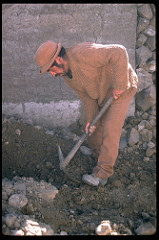
Remote Health Monitoring
Online Remote Health Monitoring from home is a technology to enable monitoring of patients outside of conventional clinical settings (e.g. in the home). This may increase access to care and decrease healthcare delivery costs.
Remote Health Monitoring or Home Telehealth is a service that gives the clinician the ability to monitor and measure patient health data and information. This can be done over geographical, social and cultural distances using video and non-video technologies. The objective is to increase patient access to health services, improve disease management including self-care management and drive earlier and proactive interventions for positive outcomes. It is a type of ambulatory healthcare that allows a patient to use a mobile medical device to perform a routine test. Then send the test data to a healthcare professional in real-time.
Incorporating Remote Health Monitoring in disease management can significantly improve an individual’s quality of life. It allows patients to maintain independence, prevent complications, and minimize personal costs. Remote Health Monitoring facilitates these goals by delivering care right to the home. In addition paand their family members feel comfort knowing that they are being monitored and will be supported if a problem arises.
Key features of Remote Health Monitoring, like remote monitoring and trend analysis of physiological parameters, enable early detection of deterioration; thereby, reducing number of emergency department visits, hospitalizations, and duration of hospital stays. The time saved as a result of Remote Health Monitoring implementation increases efficiency, and allows healthcare providers to allocate more time to remotely educate and communicate with patients.
Videoconferencing equipment is one of the most common forms of real-time (or “synchronous”) telemedicine. Peripheral devices can also be attached to computers or the video-conferencing equipment which can aid in an interactive examination.
Physiological data such as blood pressure and subjective patient data are collected by sensors on peripheral devices. Examples of peripheral devices are: blood pressure cuff, pulse oximeter, and glucometer. The data are transmitted to healthcare providers or third parties via wireless telecommunication devices. The data are evaluated for potential problems by a healthcare professional and immediately alerted if a problem is detected.The newer applications also provide education, test and medication reminder alerts, and a means of communication between the patient and the provider.
Discover the bread and drink that can make all the difference to experiencing God’s healing and divine health in your body today! In this life-giving message, Joseph Prince explains scripturally what the Lord’s Supper is about and how it is God’s key to becoming stronger and healthier in a time of escalating sickness and disease. Get an accurate understanding of how the bread and cup convey separate, powerful truths and learn what it means to “judge yourself” during the meal. Whatever your condition, get a revelation of this potent covenant meal and start eating your way to divine health!
Get the full message at:
JosephPrince.com – http://bit.ly/2aQBXmq
Find us at:
http://www.facebook.com/josephprince
Tweets by JosephPrince
You must be logged in to post a comment